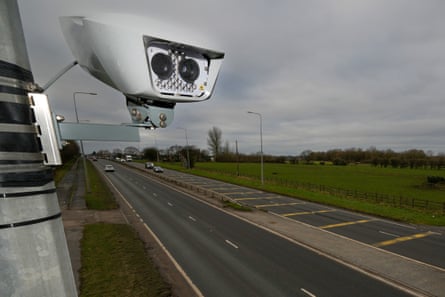Tax rules introduced last week mean many drivers – especially owners of electric vehicles (EVs) and new high-end cars – face hefty bills to get on the road.
Someone who is buying a new 1-litre Ford Puma, for example, now has to pay £440 tax for the first year – up from £220.
An overhaul of the vehicle excise duty (VED) system came into effect on 1 April, introducing a number of new charges. Drivers of EVs have lost their exemption from the tax and also have to pay an “expensive car supplement” for five years if a new vehicle costs more than £40,000, which many do.
The move has prompted concern that people will be put off buying EVs.
Buyers of petrol and diesel cars will face charges that are often double what they were last year if they buy a new vehicle.
How does VED work?
Sometimes called car tax, VED is paid every year by drivers of cars, vans, motorcycles and other vehicles for using the public roads in the UK.
How much you pay in VED depends on when your car was first registered.
If it was between March 2001 and April 2017, you will pay a rate based on the amount of carbon dioxide emissions from the vehicle. The lower the emissions, the lower the tax. This applies to a car that was bought new before 2017 or a secondhand vehicle. The duty ranges from £20 up to £760.
For cars registered since then, drivers pay under a different system. For the first year of registration, they have to pay a “showroom tax”, which is based on the vehicle’s CO₂ emissions. After that first year, they then pay a flat rate. If the car is worth more than £40,000, then they have to pay an additional £425 tax for the second to the sixth year after registration.
For the first time, EVs have been brought into the tax system this year, having previously been exempt. Owners now also have to pay the same standard rate after a lower rate for the first year if it is a new vehicle and pay the “expensive car” levy if it is new and cost more than £40,000.
How much have prices increased?
For someone buying a new petrol or diesel car, the first year’s tax could be double what it was last year.
For example, that new 1-litre Ford Puma, with 122g/km of emissions, now costs double what it did last year. The bill then goes down to the new standard rate of £195.
The owner of a new Land Rover Defender, which has emissions of 240g/km, now has to pay £4,680 in the first year. The cost was half that last year. The vehicle will also be hit with the £425 expensive car tax for five years. This has also increased, from £410 last year.
The standard rate payable from year two onwards, for cars registered since 2017, goes from £190 to £195. Up to 1 April, EV buyers were exempt from the tax but now have to pay £10 for the first year and the standard rate after that.
The significant change for cars registered between 2001 and 2017 is that vehicles that emit less than 100g/km, which includes many hybrid cars, will also have to pay tax at £20, instead of nothing.
Future sales
When the chancellor, Rachel Reeves, announced the changes to the tax system in the budget last October, she said they would increase demand for EVs as the gap between what was paid for electric and petrol or diesel cars was being widened.
But some commentators say that the move now makes it more difficult to go electric, as the overall cost has been increased by the scrapping of the exemption.
John Cassidy, the managing director of sales at Close Brothers Motor Finance, says some buyers are already put off by a limited battery charging infrastructure for EVs. “Applying VED to EVs provides one less incentive for buyers to make the switch,” he says.

Jon Lawes, the managing director of Novuna Vehicle Solutions, a Surrey-based firm that supplies fleets of cars to companies, says most EVs cost more than £40,000 and will be subject to the expensive car supplement. This may prompt employers to look for cheaper alternatives to EVs, he says.
Lorna Macpherson, a motor finance expert at Ocean Finance, which offers car loans, says that while the changes to the tax regime do make cleaner cars cheaper to run, drivers may be unable to switch due to the rising cost of motoring.
“For petrol and diesel cars, an increase in VED means higher running costs for owners, making newer, more efficient cars even more attractive,” she says. “But with rising interest rates on car finance and the general cost of living crisis, many will hold on to their current vehicles for longer rather than upgrading.”
Vauxhall says all of its EVs are now priced below £40,000, so that the expensive car supplement does not apply. Macpherson says other manufacturers with cars around the same price could follow suit.
Paying your VED
You will be reminded of when your vehicle excise duty is to be paid at the end of the month before it is due. The car can be taxed for six or 12 months. You are liable for VED once you own the car. You need to tax the vehicle before it can be used on the road.
A network of automatic number-plate recognition (ANPR) cameras around the country monitor cars on the road for compliance.

.png) 3 hours ago
1
3 hours ago
1













































